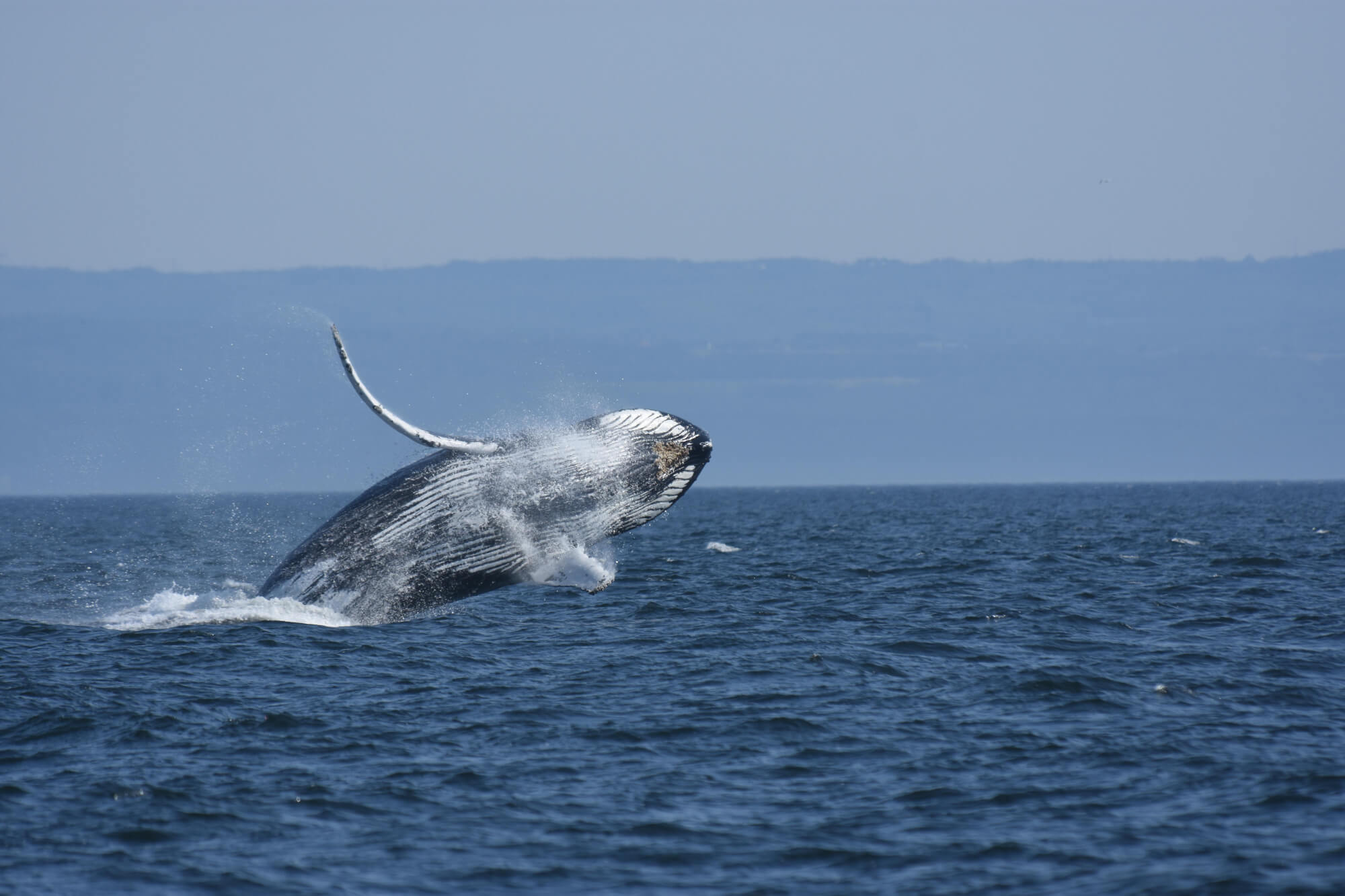Myoglobin carries and stores oxygen in the muscles of vertebrates. It is particularly abundant in marine mammals and is believed to be the key to their exceptional diving abilities. A team of researchers from the University of California studied the production of this molecule in young baleen whales. Amongst the results obtained, physical effort such as breaching seems to influence the production of myoglobin and thus facilitates their ability to dive.
When having good lungs isn’t enough…
Humans can hold their breath about 1 to 2 minutes; cetacean dives can last from several minutes to over 120 minutes in sperm whales and beaked whales. To achieve such feats, whales have more than one trick up their sleeves, including hiding their oxygen reserves elsewhere than in their lungs, i.e. in their blood and muscles. Being very rich in oxygen-transporting red blood cells, whale blood oxygenates efficiently. Whales also accumulate oxygen in their muscles through abundant quantities of myoglobin, which is what explains the dark hues of their flesh, almost black in the case of the sperm whale. In 2013, an international team discovered that myoglobin has a positive electrical charge on its surface that prevents it from agglutinating. It is this very property that is believed to provide marine mammals with a sort of oxygen tank for their dives.
Myoglobin production in Mysticeti whales
Production of myoglobin has been studied mainly in pinnipeds and small toothed whales. A team from the University of California, led by researcher Rachel Cartwright, examined the development of this molecule in young baleen whales. The results were published in the journal PLOS ONE on January 20.
The study was conducted on muscle samples of 18 carcasses of young and adult baleen whales found beached (minke, humpback and gray whales). The researchers found that in the newborns of the three species, the rate of myoglobin present in the muscles was low compared to that measured in adults. It can therefore be concluded that myoglobin production increases with age. Minke whale newborns exhibited a higher rate of myoglobin than the other two species. Researchers suspect that this is due to the speed they require to keep up with their mothers from the moment they are born, which is physically exerting. Further, myoglobin production is believed to increase much faster in young humpbacks than in young gray whales. Researchers believe that this is due to the “spirited” behaviour of young humpback whales, which are often observed breaching when they are just a few months old. Young gray whales are generally calmer in temperament. Several theories have been put forth to explain these breaches: play for the youngest individuals, seduction and defiance for males during the mating season, gathering in groups prior to migration and, of course, communication. Certainly, these acrobatic behaviours are costly in terms of energy, especially when done in succession, but they seem to have a positive impact on myoglobin production. Indeed, during muscle activity, calcium is released into the muscle cell, resulting in a series of biochemical reactions leading to the production of myoglobin. Thus, these breaches contribute to the development of myoglobin and thus likely improve the diving abilities of young humpback whales.
In marine mammals, which spend most of their time under water, repeated dives are part of their daily routine. Developing good diving skills allows whales to swim more efficiently, expand their hunting grounds and, for some species, reach greater depths where their predators are unable to follow them.
Source:
Cartwright R., Newton C., West K.M., Rice J., Niemeyer M., Burek K., et al. (2016) Tracking the Development of Muscular Myoglobin Stores in Mysticete Calves. PLoS ONE 11(1): e0145893. DOI: 10.1371/journal.pone.0145893
To learn more:
On the Phys.Org website: Exercise helps young baleen whales develop ability to store oxygen for extended dives
Whales Online:





